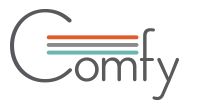Last week, over 2,500 corporate real estate professionals descended on downtown Seattle to get a pulse on the latest trends happening in the industry at CoreNet’s Global Summit. Julie Whelan from CBRE captured the sentiment of this year’s event quite well: “The old real estate order is changing.”
While the 80+ sessions at the event explored a variety of trends driving changes in the old world order, one theme really stood out to us. When it comes to the what, how, and why of workplaces, change is driven by one critical thing: the people. Read on for our highlights and key takeaways from this year’s summit.
1. People expect more from their workplaces.
“People are demanding that their workplaces reflect the way they like to work.”
— Mike Petrusky, Kayrell Connections
Chalk it up whatever you want—differences between generations at work, the impact of consumer technologies in our personal lives, the rise of the flexible workforce—but the fact is, today’s workers expect more from their workplaces.
What exactly do people want out of their offices? As John Vasquez from Verizon astutely noted, “People don't want to feel like they've left their life and come to work.” Put another way, they want their workplaces to offer a choice of spaces suited to their needs, support their health, be reflective of their values, and be enabled with the technology they want.
Paul Schuette from Accenture cited a statistic during a session on the Digital Workplace that got many heads nodding: “79% of millennials say the office environment is more important than the paycheck.” The war for talent is old news, and corporate real estate leaders realize that they play an enormous role in creating environments that attract and retain talent, and empower them to be their best selves.
As John Vasquez of Verizon declared, “I don’t just own Verizon’s space. I own the experience.”
2. To deliver great workplace experiences, you have to start with people.
“[You] can't have a real estate strategy unless [you] have a workforce strategy."
— Michael Huaco, McKesson
When it comes to designing an experiential workplace, it can be a challenge just knowing how to start. Corporate real estate professionals are familiar with the conundrum: should you start with sit-stand desks, knock down all your walls, invest in noise-cancelling headphones for everybody, put a yoga room on every floor? Those aren’t bad ideas...but are they good for people? Are they good for your business? Will they actually work? Creating great workplace experiences requires truly understanding your employees, business needs, and stakeholders.
It was clear at CoreNet, though, that rather than taking the old one-workplace-fits-all approach, today's companies are going through the efforts to understand the diverse needs of their workforce. We were impressed by the innovative approaches that companies are taking to understand the needs of their people. Mozilla, for example, uses crowdsourcing to ensure that their MozSpaces reflect the desires and work styles of the specific people working out of the office. Microsoft worked with Gensler to understand their employees’ collaboration patterns, resulting in the deployment of Team Based Spaces. Accenture impressed CoreNet attendees with its thorough approach—their team mapped workplace journeys to optimize the workplace experience for 4 distinct employee and visitor personas, based on a survey of 600+ employees, 10 site visits to other companies, 20 interviews with leadership, and 800 hours of research.
3. Change isn't always easy.
"Change management is the secret sauce."
— John Vasquez, Verizon
No matter what combination of amenities, layouts, and technologies these companies decided to implement, every speaker emphasized the importance of partnering with HR, IT, and other business units to manage change. (And we agree! As we noted in our recent eBook, one of the key steps of any workplace strategy is to assemble a cross-functional A-Team and engage early).
Our favorite testament to the power of effective change management came during Cisco’s session on “IoT, Big Data & Analytics: Opportunities and Challenges.” One of our clients, Cisco recently moved its entire company to unassigned seating. (Yes, that includes the engineering department.) Alan McGinty, Sr. Director of Cisco’s Workplace Innovation Group, noted that without a comprehensive change management strategy, this radical change would have resulted in an “all-out street fight.”
So how did Cisco pull it off? McGinty gathered data on people’s workplace patterns, brought senior leaders to the table to show them the findings, partnered with business unit leaders to communicate the changes in policy, and engaged employees by seeking their participation in workplace neighborhood associations.
4. Measures of workplace success are evolving.
It's all about “positive emotional responses to the employee experience.”
— Alan McGinty, Cisco
What does it mean for a business when their workplace empowers people to bring their best selves to work? For Cisco, designing workplace experiences and navigating change with people in mind resulted in $200M of operating expenses saved each year and a 30% reduction of its real estate portfolio over a 5-year period. While those numbers are impressive, McGinty and his team believe that the biggest impact isn’t measured by cost reduction, but by the “positive emotional responses to the employee experience.” Because he and his team designed workplace experiences and navigated change with people in mind, workplace satisfaction at Cisco has increased by 17%, while headcount has grown by 15%.
People-focused performance indicators such as satisfaction may have been overlooked in the past as hard-to-quantify “soft” impacts. Real estate leaders chose to focus instead on “hard” impacts such as utilization and energy savings. (For example, corporate real estate traditionally used metrics as utilization and seating density to measure the effectiveness of space planning.)
But as Vasquez put it, “Space planning is not just about the number of heads, but about adjacencies.” By applying a people-focused lens to space planning, and every other aspect of Verizon’s real estate, Vasquez has directly boosted Verizon’s earnings by $0.05 per share, which provides a very powerful position for conversations with Verizon’s CFO. For companies like Google, better seating adjacencies help drive innovation and get products out faster. And for everyone, Accenture pointed out that JLL’s 3-30-300 rule remains tried and true. Quantifying workplace experiences in terms of people and their impact on the bottom line helps elevate the corporate real estate team in the eyes of your peers and the C-Suite.
As Peter Diamandis proclaimed in the opening keynote, “The future is coming much faster than we think.” Comfy was founded with the mission of creating great relationships between people and their workplaces, and we’re excited to see that leading companies are embracing our firm belief that workplace experience matters. We couldn’t be more thrilled at the sea change happening in our industry and can’t wait to see what’s next!
P.S. Want to learn more about why a people-centered workplace is a winning approach? Check out our eBook.

 Request a Demo
Request a Demo






